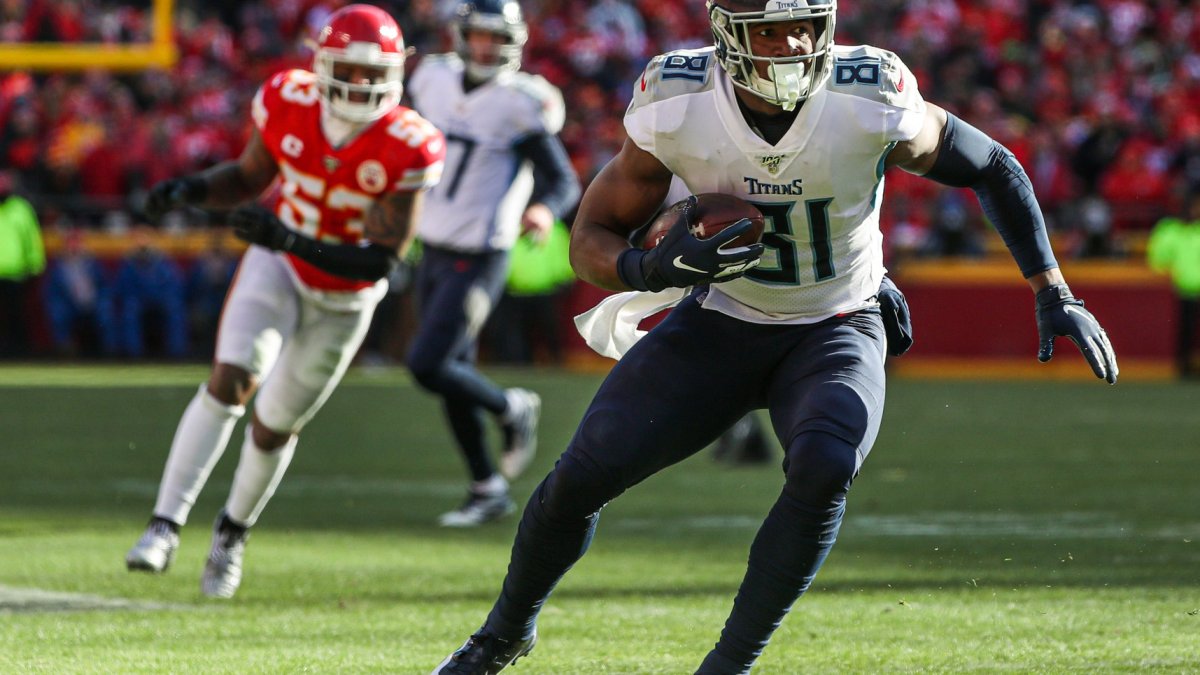The tight end position is one of the most difficult when it comes to transitioning from the college game to the NFL level. Not only do tight ends need to learn complex route schemes, but they are often asked to understand blocking in both the run and passing games. With all of that mixed together, it’s extremely rare to see any rookie tight end break out.
Some tight ends — such as George Kittle, Mark Andrews, Travis Kelce and Zach Ertz — broke out in their second season, but other tight ends needed even more time before they became useful fantasy assets. Austin Hooper, Darren Waller, Tyler Higbee are all examples of tight ends who broke out in their third or fourth seasons.
In fantasy football drafts, the elite tight ends come with high draft capital, and there are only so many of them. If you miss out at the beginning of your draft, it’s crucial that you can snag one or two of these late-round targets who have shown the upside that suggests that they can make the next leap.
[Editor’s note: Subscribe to PFF ELITE today to gain access to PFF’s Premium Stats and new Player Grades experience in addition to the 2020 NFL Draft Guide, 2020 Fantasy Rookie Scouting Report, PFF Greenline, all of PFF’s premium article content and more.]
In this series of articles, I’m looking at the breakout potential at the tight end position. This can range from second-year tight ends to fourth-year tight ends. I will take a look at their current situation to see if they have a clear path to targets. I will then analyze what they have done in the NFL up to this point and determine whether they have shown the upside to breakout in 2020.
Why Tennessee Titans tight end Jonnu Smith is a 2020 fantasy football breakout candidate
The Tennessee Titans’ supporting cast of wide receivers not named A.J. Brown is not one to get excited about. They are one of the few teams that do not possess a great surplus of depth at the wide receiver position, especially with receivers who command a high target share. Outside of Brown’s 20% target share, no other player had a higher target share than 16% (Corey Davis). The fact of the matter is that there is an opportunity for targets behind Brown in this offense — targets that Jonnu Smith could command. Keep in mind that Delanie Walker and his 30 targets from last season are also gone.
In 2019, Smith showed that he could be an efficient receiver with the limited opportunities he did receive. He ranked eighth in yards per route run among tight ends who were targeted at least 25 times, and he finished third in avoided tackles after the catch among that same group of players.
Tight ends: Most missed tackles forced in 2019 (regular season only, min. 25 targets)
| Name | Targets | Receptions | Missed tackles forced |
| George Kittle | 106 | 85 | 20 |
| Travis Kelce | 130 | 97 | 15 |
| Jonnu Smith | 44 | 35 | 14 |
| Gerald Everett | 54 | 37 | 13 |
| Darren Waller | 115 | 90 | 11 |
Only Kittle and Kelce had more avoided tackles after the catch. Smith also ranked second in yards after the catch per reception, which just shows the explosiveness he has with the ball in his hands.
He also showed massive improvement from his first two seasons. After ranking outside the top 30 in his first two seasons, Smith’s PFF receiving grade ranked 11th among qualifying tight ends in 2019.
Smith is also likely to play a larger role near the end zone. The now-departed Tajae Sharpe was second on the team in end-zone targets (four) and tied Brown with three receiving touchdowns to lead the team. An offense like the Titans’ — one that uses multiple-tight end sets frequently — will likely continue that usage near the end zone. Last season, they ranked sixth in multiple-tight end sets inside the opponent's 20-yard line.
Not surprisingly, this run-based offense lined up with two or more tight ends on 437 offensive snaps a season ago, the fourth-most in the NFL, and only the Raiders ran 13 personnel (one running back, three tight ends and one wide receiver) as often as the Titans. And when they passed from multiple-tight end sets, they earned the league’s highest team receiving grade. Look for the Titans to continue to leverage their tight ends in the passing game, and that projects Smith to be a player playing on almost every down in 2020. He should easily be the leader in targets at the position.
The Titans targeted the tight end position 25% of the time last season (eighth-highest), but because of their run-heavy playcalling, the total targets for tight ends ranked middle of the pack (17th-most).
Tennessee is not going to be a high-flying, aerial offense, but they will keep the tight end position involved when they do decide to pass the ball. Smith has already shown great upside in his very limited opportunities, and with his path to targets extremely clear, another step forward for the fourth-year tight end appears imminent.



 © 2025 PFF - all rights reserved.
© 2025 PFF - all rights reserved.